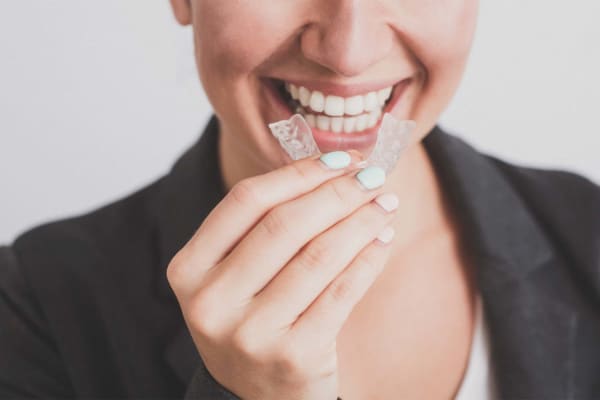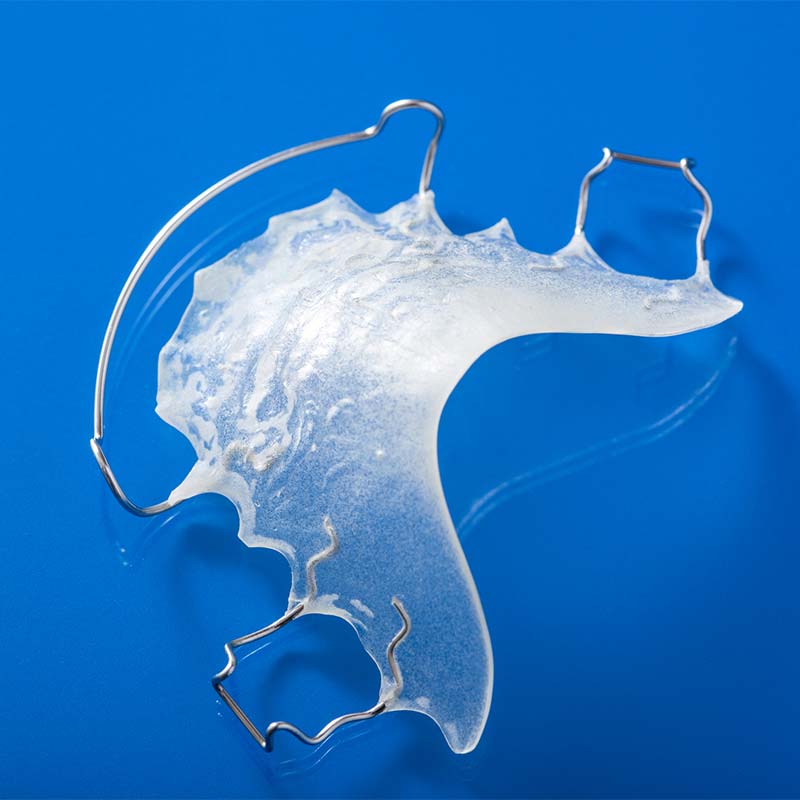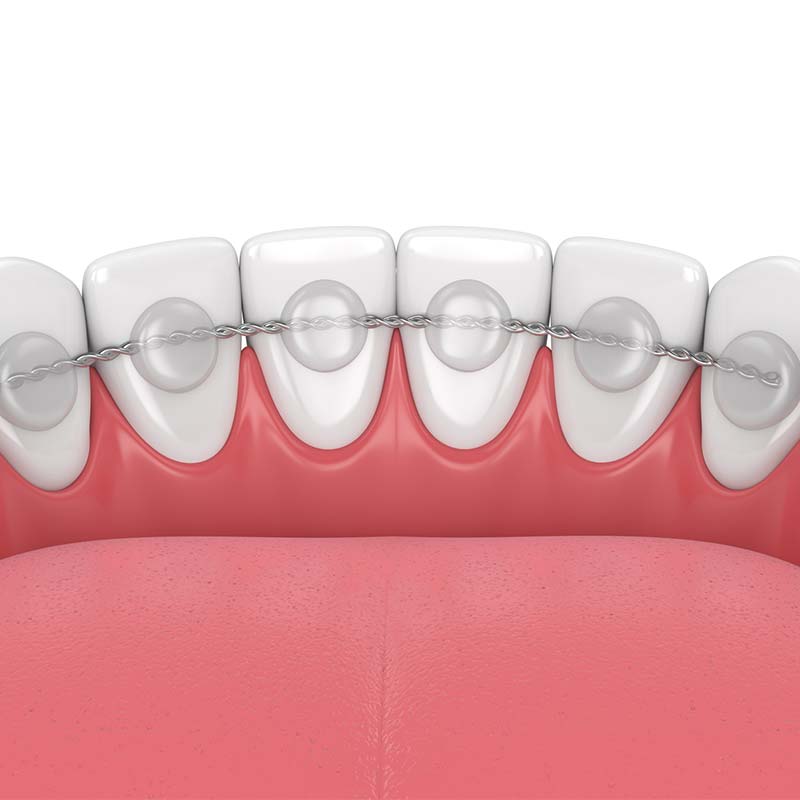Retainers and Life After Treatment
Taking Care of Your New Smile
Congratulations, you made it! We totally understand that most patients are beyond excited to complete their orthodontic treatment. Enjoy your new smile! Keep it healthy for years to come with a retainer and our recommendations for continued dental care.
Topics on This Page:

Retainers Extend the Life of Your New Smile
A retainer is a device that fits over your teeth and keeps them in the proper alignment obtained during your treatment. The bone and soft tissue surrounding the teeth take several months to stabilize once your braces are removed/your Invisalign or clear aligner treatment concludes.
Wearing your retainer as prescribed will prevent any undesired movement of your teeth during this period. You worked so hard during treatment to reach this point, and the last thing we want is for you to have to repeat treatment…so please follow Dr. Reichard’s instructions for wearing your retainer.
We will create a custom retainer based on your new smile, the type of treatment you just concluded and any conditions or lifestyle habits (for example, if you clench or grind teeth, or if you play a woodwind instrument) that may impact post-treatment teeth movement.
At your appointment, we will discuss how long you should wear your retainer and proper retainer care. Most patients will wear their retainers for at least 12 hours each day for the first 6 months, and then switch to just wearing the retainer at night.
We Recommend the Best Retainer Type for Your Lifelong Smile
Dr. Reichard uses two different types of retainers for patients: removable and fixed retainers. We will advise you about which is best for your specific situation and clinical needs.

Removable Retainer
We have two types of retainers that are non-permanent and can be removed from your mouth. For patients completing Invisalign or clear aligner treatment, you will receive a clear plastic retainer, very much similar to your aligner trays. The other retainer is a device made of a combination of wire, acrylic material and clasps.
Removable retainers make it easier to brush and floss your teeth compared to a fixed retainer. The retainer itself can also be easily cleaned. However, as both of these retainer types can be removed, they can also be easily lost or damaged…and they can be expensive to replace.
These removable retainers require patients to keep up the plan/schedule of wearing the retainer. Because they can be removed, they can also be forgotten to be worn as directed.

Fixed Retainer
A fixed retainer, also called bonded wire retainer, is simply a thin metal wire that is bonded to the back of your lower or upper (or both) front teeth. Dr. Reichard uses a composite material glue similar to what she uses to attach braces. Fixed means it is permanently placed in the mouth and can only be removed by an orthodontist. Bonded retainers hold the teeth in their aligned position.
A fixed retainer has the advantage of 100% adherence to wearing – you can’t remove it or lose it. However, a bonded retainer does make it harder to floss, which can increase risk of dental diseases like cavities and gum disease. A fixed retainer can also break, requiring a repair or replacement from Dr. Reichard.
Caring for Your Retainer Is Easy
To keep your retainer in tip-top shape, we recommend the following care guidelines. Keep in mind that retainers are worn for a period of multiple years, and they will need replacement periodically. Your first retainer at treatment completion is included in the treatment contract.
- Insert your retainer by gently pushing it into position with your fingers. Do not bite down to get the retainer into position.
- Avoid manipulating your retainer with your tongue as it can warp the retainer over time.
- Remove your retainer before eating. Be sure to brush both your teeth and retainer after each meal, and in the morning and before bed. Don’t forget to floss!
- Just like on your teeth, plaque can cling to your retainer. Gently scrub your retainer with a toothbrush and either toothpaste or a mild liquid soap. You can also use a denture cleaning solution to help remove plaque and tartar. Be sure to rinse thoroughly. Do not clean with, rinse with or immerse in hot water, as the retainer can warp from the heat.
- When not wearing your retainer, keep it enclosed in its case. You’d be surprised at how many family pets like retainers as chew toys.
- Do not leave your retainer in direct sunlight or hot locations (like your car) as the retainer will warp and/or melt.
- Brush your teeth and retainer each morning, evening and after each meal.
- Floss each time you brush. A floss threader will help. Simply thread a piece of waxed floss through the loop, then insert the threader beneath the wire. Pull the floss through, ensuring you floss between each tooth and under the wire.
- Have your family dentist check the wire at your six-month checkups. If there are issues with the wire or bonding, we can repair/replace it or determine if you should move to a removable retainer.
A Damaged, Broken or Lost Retainer Is an Orthodontic Emergency
Retainers play an extremely important role in keeping your new smile in perfect alignment. Your teeth can shift faster than you think without your retainer. This is why we consider a lost, damaged or broken retainer to be an orthodontic urgency. If you lost your removable retainer, or if your removable or fixed retainer is damaged or broken, please call our office right away at (570) 387-1243 for a replacement.

Brush, Floss and See Your Family Dentist Regularly
Hopefully, after these years of orthodontic treatment, proper brushing and flossing have become second nature to you. Keep up the good oral hygiene once your braces come off or your treatment concludes! And, be sure to visit your family dentist every six months for regular checkups and cleanings.
If we can ever be of any further service to you in the future, please don’t be a stranger. You’re part of the Rachel E Reichard Orthodontics family and always have a place at our table.